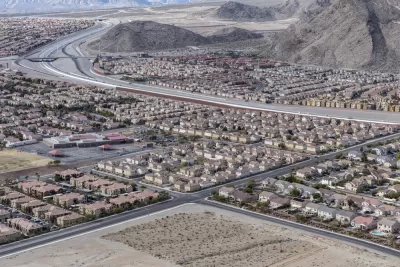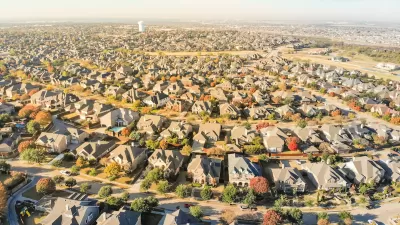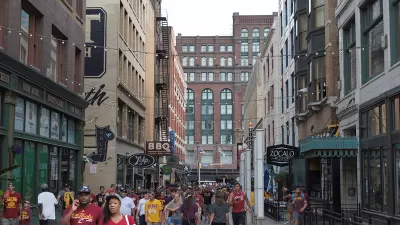Low-income families living in high-sprawl neighborhoods are limited in their access to education, jobs, and other amenities, often trapping them in a cycle of poverty.

New research from the University of Utah reveals that sprawl can have a measurable, negative economic impact on low-income American households.
According to a piece in Science Blog, “A series of studies from the University of Utah has found that children from low-income families who grow up in areas characterized by urban sprawl face significantly reduced earning potential compared to those raised in denser neighborhoods. The research provides the most detailed evidence yet of how city planning decisions could be reinforcing cycles of poverty across generations.”
The researchers used data from more than 71,000 U.S. census tracts, defining sprawl as “urban environments with poor pedestrian access, heavy car dependency, and sharp separation between residential, commercial and business areas.” According to the study, the annual expected income of a person growing up in a very low sprawl tract is, on average, roughly 10 percent higher than that of people brought up in high-sprawl neighborhoods.
Perhaps most striking is how sprawl affects families differently based on income level. While children from low-income families see reduced earning potential in sprawling areas, the opposite appears true for wealthy families.
The researchers note that while their study does link sprawl and lowered social and economic mobility, the causation is not entirely clear. However, “local city planners and officials need to consider the broader social implications and choose zoning patterns and regulations that are best for all residents, particularly trying to reduce sprawl and increase infill development may have a long-lasting positive impact on children’s economic possibilities.”
FULL STORY: Urban Sprawl May Trap Low-Income Families in Poverty Cycle

Study: Maui’s Plan to Convert Vacation Rentals to Long-Term Housing Could Cause Nearly $1 Billion Economic Loss
The plan would reduce visitor accommodation by 25,% resulting in 1,900 jobs lost.

North Texas Transit Leaders Tout Benefits of TOD for Growing Region
At a summit focused on transit-oriented development, policymakers discussed how North Texas’ expanded light rail system can serve as a tool for economic growth.

Why Should We Subsidize Public Transportation?
Many public transit agencies face financial stress due to rising costs, declining fare revenue, and declining subsidies. Transit advocates must provide a strong business case for increasing public transit funding.

How to Make US Trains Faster
Changes to boarding platforms and a switch to electric trains could improve U.S. passenger rail service without the added cost of high-speed rail.

Columbia’s Revitalized ‘Loop’ Is a Hub for Local Entrepreneurs
A focus on small businesses is helping a commercial corridor in Columbia, Missouri thrive.

Invasive Insect Threatens Minnesota’s Ash Forests
The Emerald Ash Borer is a rapidly spreading invasive pest threatening Minnesota’s ash trees, and homeowners are encouraged to plant diverse replacement species, avoid moving ash firewood, and monitor for signs of infestation.
Urban Design for Planners 1: Software Tools
This six-course series explores essential urban design concepts using open source software and equips planners with the tools they need to participate fully in the urban design process.
Planning for Universal Design
Learn the tools for implementing Universal Design in planning regulations.
City of Santa Clarita
Ascent Environmental
Institute for Housing and Urban Development Studies (IHS)
City of Grandview
Harvard GSD Executive Education
Toledo-Lucas County Plan Commissions
Salt Lake City
NYU Wagner Graduate School of Public Service





























